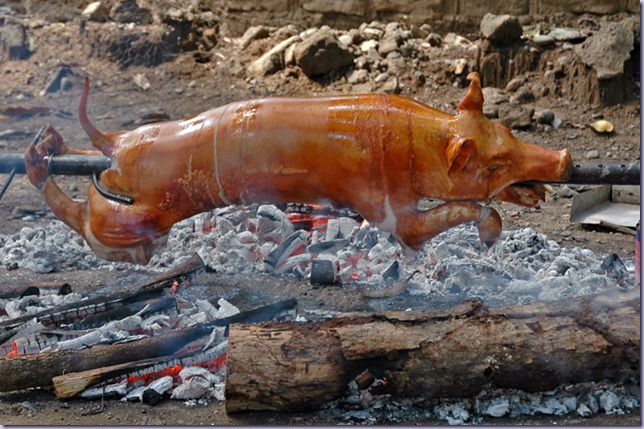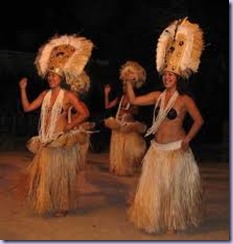©Millennium Media Entertainment, Inc. ©MME Television Services Asia
One of my purposes here is to continue advising Clients about menu and dietary concepts designed to help them look, feel and most importantly, perform at their very best, in front of a camera.
It occurred to me the other day that Texas and Polynesian cooking share allot in common. 
Both Texas and Polynesians do quite a bit of cooking outdoors and indoors, they make (boil) stews and things like Chili.
People in my home state of Texas argue more about Texan cooking than they do politics.
Most Texans don’t think that highly of politicians anyhow, which is one reason our elected officials only meet every two years and have six weeks to get their legislative business done.
We figure that gives them two years to hash out their differences and therefore six weeks ought to be enough time for passing laws. If nothing else, this practice saves money.
I can’t help but think Washington would do better by Americans, if Congress’s time for passing laws had a shelf life. They seem to wait to the last minute anyhow. Maybe they should take a look how things are done in Texas.
What we do care passionately about is our native cooking. People argue about whether brisket should be cooked outside fat side down or up and if it should be marinated or not.
No one ever changes anyone’s mind, and the end product is always tremendous.
Note: Unlike other parts of the US, Texans generally don’t baste their ribs, chicken or brisket as it cooks. Bar-B-Q sauces and other condiments are served on the side.
The other great debate is over Chili. Non Texans use ground meat. That is a sin to us. We use cubed pork, lamb, goat or beef.
Another sin committed by non Texans, in our opinion, is that they use the wrong beans, like kidney beans. Chili that is overly bean heavy is also considered sinful.
This is supposed to be a Texas meal, in which meat is the main course and beans are a side dish. Same hold true for beans in Chili. They are second fiddle to meat.
Texas Cooking has a very heavy Mexican influence, too. We generally use pinto beans for about every kind of Tex-Mex dish. We also like jalapeño peppers in about everything except ice cream and desserts. Some people add onions, garlic and jalapenos to mashed potatoes (Skins on is traditional).
Chili’s main ingredients are meat(s), garlic, onions, carrots (optional), tomato sauce, salt, oregano, Chili powder, cumin and without a doubt, Cilantro.
Some people feel that their Chili needs a drink. Purists would consider nothing else than Mexican beer.
We believe that American beer can’t even come close to what they make down in Mexico. So, some folks put a bottle or two in the pot, depending on its size. Has to be Mexican beer, preferably dark.
Other fundamentals debated in Texas are whether you sear the meat and sauté the vegetables, first. I think it’s best not to sear or sauté anything. Doing so puts weight on the food, making it sink to the bottom of your pot and thus makes more work and burns the clock.
 This being said, once you begin, the process is no different than cooking Chili Polynesian Ha’ka style, than my previous postings.
This being said, once you begin, the process is no different than cooking Chili Polynesian Ha’ka style, than my previous postings.
Absolutely the same technique I have been describing here for a month or so for Italian or Filipino dishes, prepared Ha’ka style. (Links to previous relevant blogs will be provided at the end of this post)
The beauty of cooking like Polynesians is: 
- No sugar, salt or oil
- No unnecessary extra steps
- Easy and fast to do
- Everything is cooked together
- Inexpensive
- Very healthy
- Allows you make multiple future meals
I have made some minor adjustments, though. I recommend using a wok and suggest you use whatever ingredients you want, assuming you know what the basic ones are
The basics are some kind of meat, onions, oregano, basil and garlic. Feel free to add other vegetables like carrots, spinach, cabbage or my favorite Pechay.
This Ha’ka does have a five minute step the others didn’t. Cover a quarter liter of dried beans in water 24 hours ahead of time.
What this does is soften the beans and makes cooking them faster. I use white Filipino beans. One reason is I have never seen Pinto beans in The Philippines and other is, I like them.
A major benefit of using local Filipino beans is that they have been cleaned and picked over already. All dried beans in the Western Hemisphere have to been cleaned up and washed.
Here, they don’t. You rinse them off and you are good to go.
So, once again bring a couple of quarts of water to a boil and put in a half kilo of meat with 1/4 kilo of drained pre-soaked beans. Cover the wok and bring it up to a rapid boil. Then reduce it to a rolling boil.
You have about ten minutes to kill, so cut up your vegetables and add them to the Ha’ka. Yesterday on a whim, I put in about a cup of shell pasta.
Remember to keep an eye on the water level. You want the water to cover, not immerse, your food. Stirring is to make sure nothing is sticking to the bottom and everything is blended. I think I added more water four or five times, yesterday.
For vegetables I use pechay, beans, carrots, onions and garlic. Spices are Chili Powder or ground Chili seeds, cilantro, ground cumin, basil, oregano and a little soya sauce.
Your Ha’ka is now far enough along for you to add everything. Sir and see how the Ha’ka is doing and add 500-750 milligrams of tomato sauce. Stir it and it’s ok to cheat a little. I did. I put in a package of mushroom gravy. Stirred/folded it all together. Tasted it and added what spices I though it needed more of.
Turned off the fire and left it covered for about ten minutes and it was ready. I made enough for lunch, served some of the staff here and stored five more meals for myself.
I am sure some of my countrymen and women would be most likely howling over how I made the Chili, if they knew. So, don’t tell any Texans you may know.
I would respectfully reply that I am a Texan and that I will do whatever I want, as is my right a citizen of the Lonestar State. Our golden rule is simple. Do what you want.
Just be sure not to bother another person.
Furthermore every real Texan knows and appreciates that rules are made to be broken, if you have a good reason. Furthermore, there would not be a Texas if everyone just followed the crowd.
Also, you may want to consider adding a packet of dried coconut cream and join me in my heretical ways.
Here are the links to previous Polynesian Ha'ka Cooking:












